
Aaron Hartz (right) during a flight into the South Greenland base camp with scientist from Northwestern University. Hartz provides safety support during the field study season. Photo: @aaronjhartz
This weekend, a new phrase, “the 5th season in the American West,” caught my eye: wildfire and smoke. Out East, there have been biblical rains. And sandwiched in between are droughts and weather anomalies.
An apocalyptic lead? Maybe. The images and stories, however, have been ground-truthed. This brings Aaron Hartz into the mix. He’s part scientist with a hefty dose of ski guide.
As a kid growing up in Oregon, Hartz’s ski area haunts were the usual lift-serve gateways. His love affair with skiing began at places like the mom-and-pop scale Hood Doo and night skiing at a gritty Mt Hood Ski Bowl. Ski areas where trash bag ponchos are practical storm gear. His was a free-spirited experience. But, in terms of thinking about where he’d take this love affair, his high school version trended towards lift-serve nirvana.
Hartz is a reminder that you don’t need to be pedigreed to become a backcountry Jedi. “When I was a kid, I did occasionally see people out skinning, and I always kind of wondered how that works,” said Hartz in a self-deprecating tone. “I would go skiing with my friends in high school, and we would go out of bounds, duck ropes. We didn’t know anything about avalanches. I didn’t know anything about avalanche safety gear, anything like that.”
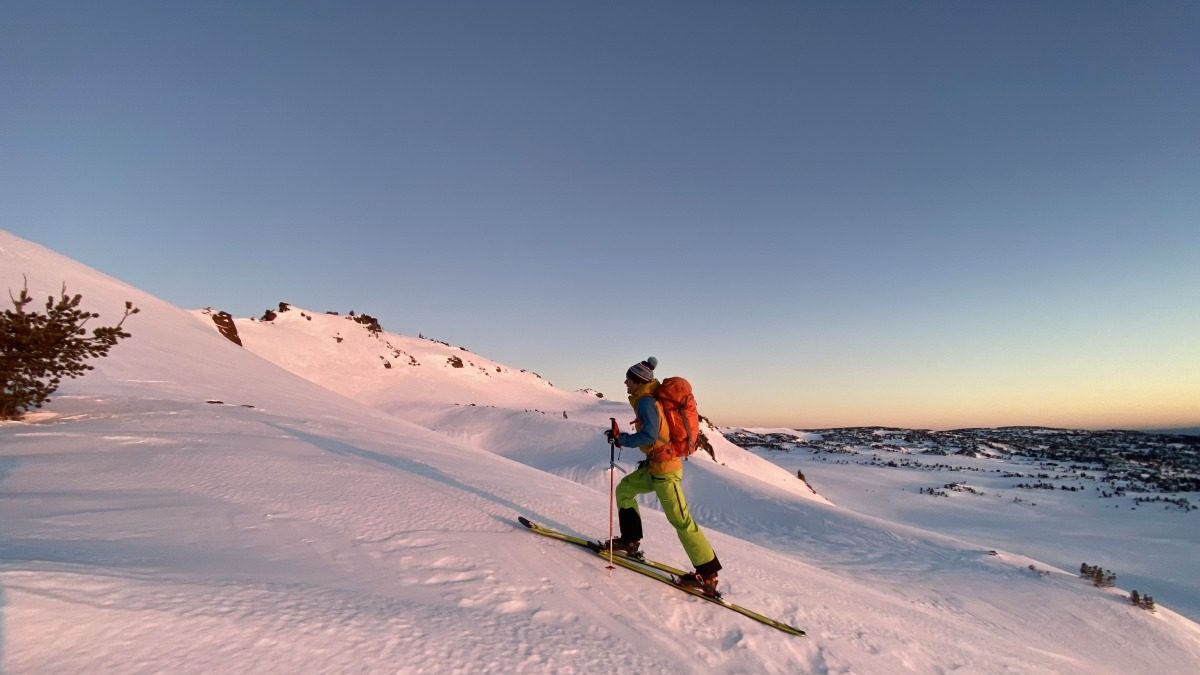
Way out of bounds in the Three Sisters Wilderness, Hartz catches sunrise on his way to sample the snowpack. Photo: Ali Hartz
A serious student, Hartz enrolled at Oregon State University. There, he earned a B.S. and one of two master’s degrees. College also exposed Hartz to the technical aspects of mountain travel. And whiplash fast, after realizing a desk job in the ivory tower didn’t suit his temperament, Hartz nailed down an AMGA Ski Guide certification. If you spy him in Central Oregon on a dawn patrol magnifying snow crystals in a snow pit, the science of it all coupled with the outdoor theater were in his intellectual wheelhouse.
For years Hartz followed the seasonal cycle of rock, snow, then rock again as a guide and avalanche forecaster. “Eventually, I just started putting the idea together of trying to combine my science background and my guiding background,” commented Hartz. “I remember at one point searching around just trying to figure out what was out there. Other people were doing something similar, but it was all volunteer-based.”
What once drew Hartz in the direction of bigger mountain objectives was the dreaminess of it all. That’s not difficult to distill. Dirtbagging with ropes, skins, and skis is the tribe’s lifeblood. But putting food on the table, let alone paying for the privilege of dirtbagging, takes cash. Hartz was frank about living the dream and fusing his skill sets. “I need to do this for money. I need to pay bills,” he said when describing his desire to assist scientists and make a living.
With lab-tech chops and mountain savvy, Hartz began to combine his seemingly mutually exclusive expertise.
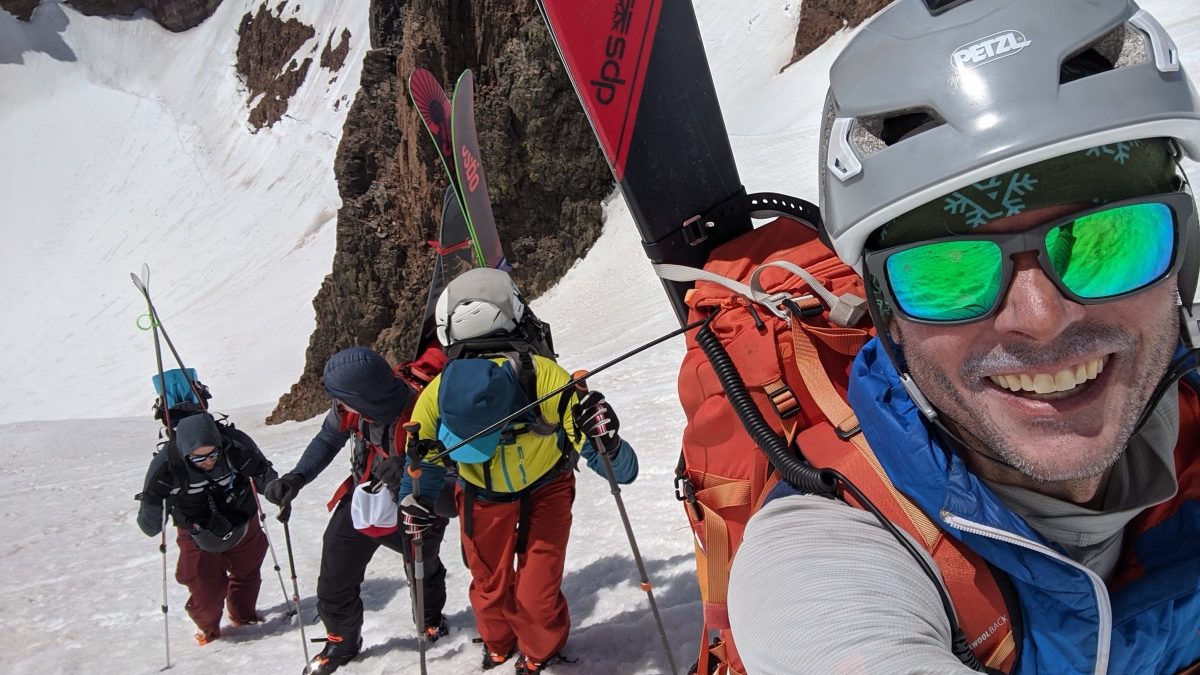
Right: Hartz guides clients in the Cascades for Oregon Ski Guides. Photo: @aaronjhartz
Initially, Hartz lacked a clear trajectory for piecing his career options together. Avalanche forecasting and guiding suited him, but the prospect of supporting field research in the summer months was compelling. Hartz found opportunities for full-time work in field science. But, that commitment would preclude guiding and forecasting. The model Hartz landed on was securing independent contracts for his emerging business helping scientists do their work.
This summer, for example, Hartz roamed the Cascades installing remote sensors for the Pacific Northwest Seismic Network (PNSN). The PNSN monitors regional seismic and volcanic activity. He also surveyed forests and installed 360-degree cameras as part of a project that remotely scans swaths of rugged forested terrain for forest fires.
Hartz has ventured further afield to the Juneau Icefield and Greenland. He’s also become integrated into a group from Northwestern University studying South Greenland’s past environments. He was part of that team’s research in 2016, 2018, and 2019 where his responsibilities include camp manager, sling load coordinator, data collector, and point person for polar bear mitigation.
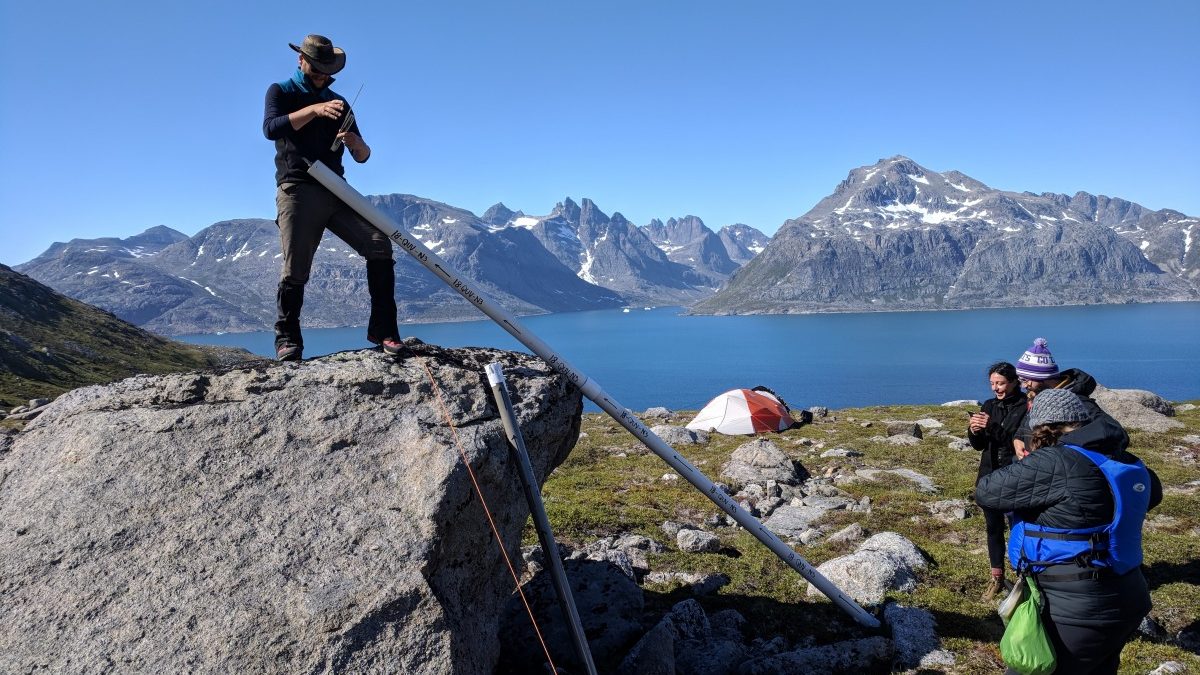
The Greenland based research project collects core samples of glacial lake sediment to determine the past climatic conditions. Photo: @aaronjhartz
A heightened sense of one’s place on the food chain is not an uncommon sensation in Greenland. Polar bears, endemic to Greenland, are among the rare species that occasionally hunt humans. Researchers often are accompanied by a guide armed with a rifle. Hartz’s repertoire now includes rifle marksmanship, adhering to science research protocol for operating in polar bear habitat in Greenland. That skill might seem beyond even six degrees of separation from belays, ski cuts, and shear tests.
All this is to say that opportunities and personal interests can diversify a guide’s resume.
“When I started my bachelor’s degree, I thought going into the earth, and biological sciences would be kind of like being like Indiana Jones, just running all over and being on all these adventures,” Hartz reflected. “And, you know, it didn’t really turn out that way.”
Due to available funding and research opportunities, Hartz became involved with the microbiology side of those disciplines. Occasionally he conducted fieldwork, but most days transpired in the lab.
Indian Jones or not, the guiding and forecasting life for Hartz eventually came full circle. His guiding skills now coexist with rigorous science.
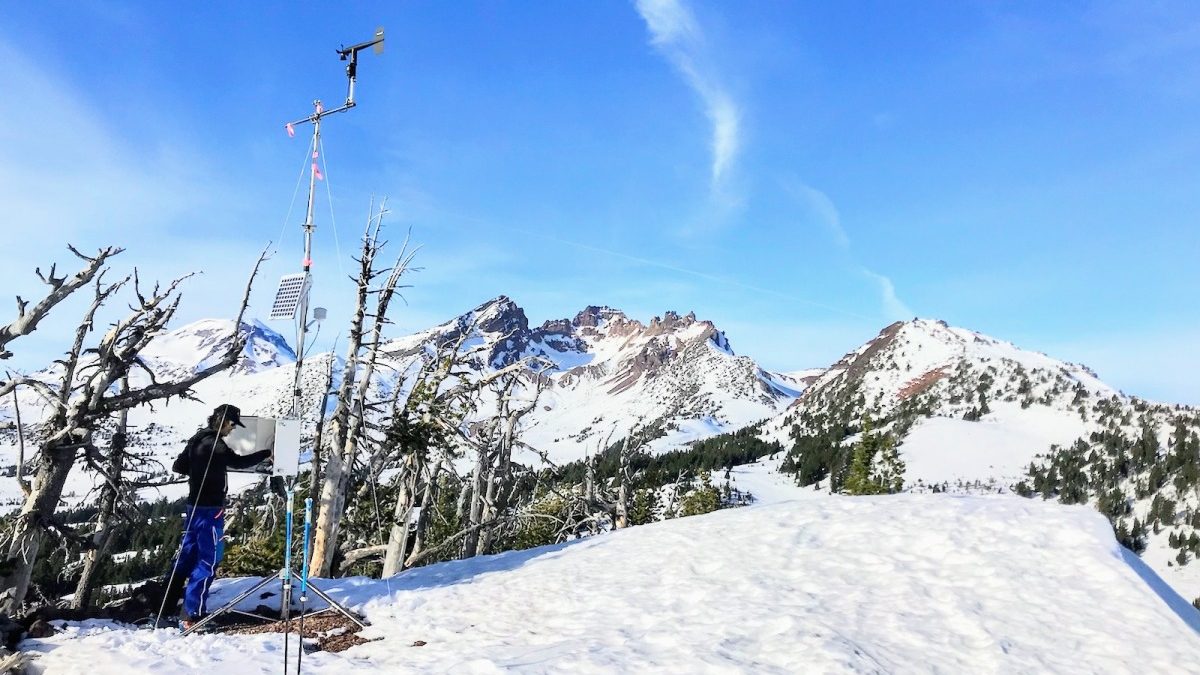
Hartz helps maintain the Moon Mountain weather station which he designed and installed. The station provides data for Hartz and others to develop avalanche forecasts for the Central Oregon Avalanche Center. Photo: @aaronjhartz
“I first took a mountaineering course at OSU as an undergraduate and then took my first avalanche course in the early 2000s,” said Hartz. “It all just kind of started, and I tried to piece it together, determining what you could do out there in the mountains and just getting the idea to start exploring around.”
The “exploring around” landed Hartz in a good place — a place maybe he didn’t foresee ducking out of bounds as a teen, grinding away in a microbiology lab, or training as a mountain guide. Some of the skills Hartz acquired along his path may have deviated from the codified AMGA progression.
As the 5th season in the American West gradually abates, scientists prepare for more field studies and remote monitoring to better understand climatic disruptions. This much is clear; the scientists Hartz now supports are in good hands.
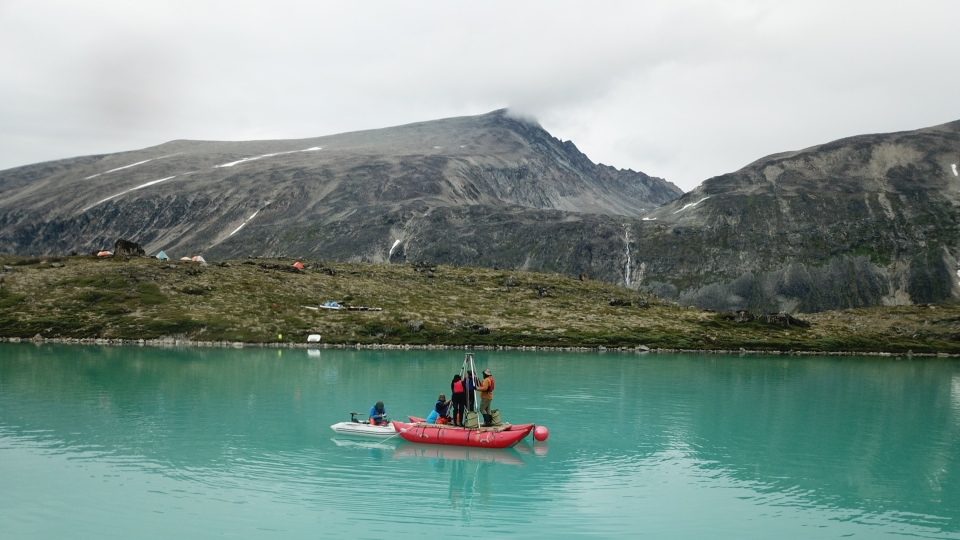
Collecting a sediment core sample from a South Greenland glacial lake. Photo: @aaronjhartz
Jason Albert comes to WildSnow from Bend, Oregon. After growing up on the East Coast, he migrated from Montana to Colorado and settled in Oregon. Simple pleasures are quiet and long days touring. His gray hair might stem from his first Grand Traverse in 2000 when rented leather boots and 210cm skis were not the speed weapons he had hoped for. Jason survived the transition from free-heel kool-aid drinker to faster and lighter (think AT), and safer, are better.
